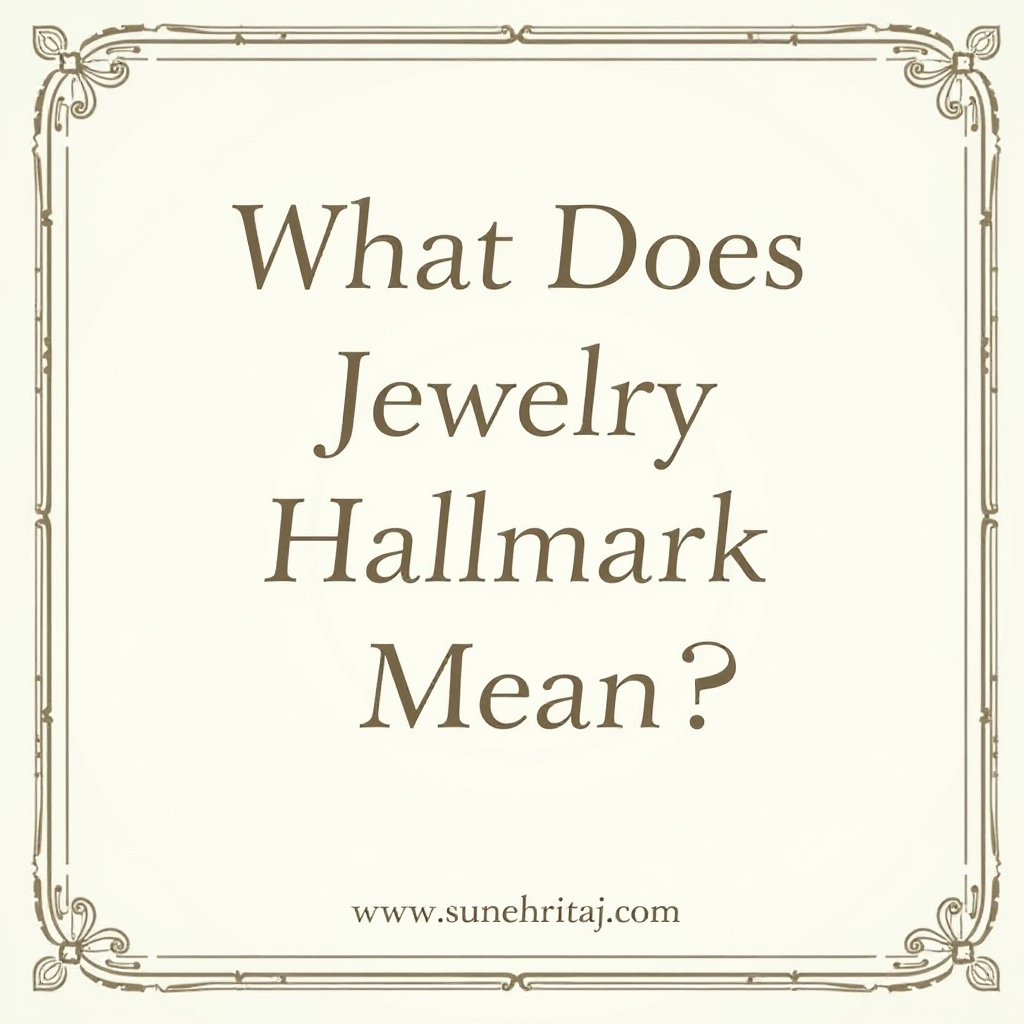ewelry Hallmark
While out shopping for jewelry, whether good or fake, you may find different hallmarks on the items. One of the most familiar symbols you will normally come across is the jewellery hallmark symbol. But what exactly does Jewelry hallmark mean and why would one need to know what it is all about? In this article, you will learn what hallmarks are, why it is important to identify them, and how to notice hallmarks on fake or cheap imitation jewelry. When you finish reading this post, you’ll be a more confident consumer able to analyze jewelry markings.
What is a Jewelry Hallmark?
Jewelry hallmark is a punch mark or an inscription on the jewelry that conveys several pieces of details on the piece of jewelry. Such engravings always point to the degree of purity in metals, the nation of manufacturer, and occasionally the designer. Hallmarks are a means of guarantee for buyers regarding the quality of the articles and the type of material used in the manufacturing of jewelry.
When it comes to fine jewellery that is made from precious metals such as gold, silver or platinum the hallmark will often indicate the purity of the metal. For instance, the myth popularized through reference to, ‘14K gold’ or ‘18K gold’, refers to the karatage of gold. In artificial / costume jewels, the hallmarks are Printed to indicate the kind of metal or material that has been used where the buyer needs to know the kind of quality that he or she is buying.

The History and Importance of the Jewelry Hallmarks
Trademarks are centuries old and have historical significance or if located originally in Europe that they’re tradition bound. They were introduced in the past as the credentials proving the products’ quality and genuine nature. Consumers could be assured of the fact that they were buying a real item when they saw hallmarks such as buying a gold jewel or a silver bracelet.
Today, though, while hallmarks are strictly relevant to fine jewellery they are equally relevant to artificial jewellery as well since they help the buyer understand what the piece he or she is buying is made of. For instance, it is common to find a trinket that is made of costume jewelry with labels such as “Lead-Free” or ‘‘Nickel-Free’’on it. This is particularly important to people who have certain allergies or sensitivities to certain metals.
Many people are unaware of the process of determining what the marks on the jewelry actually mean and how to decipher them if found on their jewellery.
Jewelry hallmarks depend on the country the piece of jewelry was produced and the company that made it. However, there are a few key elements to look for when reading a jewelry hallmark:
Metal Type and Purity: This gives a clue of the type of metal used together with its fineness such as the ‘925 ‘stand for sterling silver and ‘750’ for 18K gold. Maker’s Mark: This is normally a symbol or initials that point to the jeweler or manufacturer of the creation.
- Assay Mark: This mark is designed to show that only metals which have gone through sample testing by the appropriate authorities are used.
- Country of Origin: Some of the hallmarks will be specific to the country where it was made / assayed.
- Date Marks: a small amount will have a date mark which means the year it was produced or the year it was hallmarked.
In case of purchasing non-precious jewelry which might be made of artificial materials it is essential to know that the hallmark does not always mean the amount of metals in it in the same manner as it is meant. It may point to other significant features such as “Alloy ‘ or “Brass,” which are familiar in accessories made of costume jewelry.
How To Read a Jewelry Hallmark
Jewelry hallmarks differ with country and maker, as the last name has it. However, there are a few key elements to look for when reading a jewelry hallmark:
- Metal Type and Purity: This shows the type of metal that the jewelry is made of and the carat of that metal, example 925 for silver or 750 for gold.
- Maker’s Mark: This is a mark or two which points out the manufacturer or the jeweler who has made the jewelry.
- Assay Mark: This mark has the purpose to indicate that the metal has been checked for its purity by an official body.
- Country of Origin: Some hallmarks will include the country where the jewelry was produced or tested.
- Date Marks: A few items of jewelry will feature a date mark or the year of manufacture or certification.
If you are planning to purchase an artificial jewel, then the trademark may not mean collaring of the metal at all. But it might mean other factors such as “Alloy” or “Brass” because often it is used in cheap jewelry, which is also called costume jewelry.
Hallmark on artificial Jewellery
The hallmark can be found both on artificial jewelry, although these results may vary from results of fine jewelry made of precious metals. For artificial jewellery, hallmarks could be followed by the type of the composition or the base metal like ‘Brass’ or ‘Nickel Free’. It can even bear the “Lead-Free” hallmark, something that can make a lot of difference to consumers considering health and safety.
Even if you’re buying counterfeit jewelry, it is still important to know the hallmark if it is present. Although these pieces will not bear or contain metals such as gold, silver and platinum, the hallmarked information that is inscribed into the jewellery informs the consumer on the quality standards and material used in the making of the jewellery.
Why Does a Buyer need Hallmarks?
Hence, jewelry hallmarks act as a seal of quality and genuine in ensuring the customer has confidence in the jewelry item they are acquiring. When it comes to fine jewelries, they have hallmarks to guarantee the purity of the metals used and you are paying the correct price.
In case of artificial jewelry, and hallmarks to fulfill this assurance that the materials used are safe and reached some certain standard especially for those who are sensitive or allergic to particular metals.
Common Jewelry Hallmark Symbols to Look For
- Gold Hallmarks:
- “14K” or “18K” for gold content.
- “10K” for lower-quality gold.
- “750” or “585” for 18K gold.
- Silver Hallmarks:
- “925” for sterling silver (92.5% pure silver).
- “800” or “830” for silver with a lower purity.
- Platinum Hallmarks:
- “950” for platinum (95% pure).
- “900” for a lower-grade platinum.
- Costume Jewelry:
- “Brass,” “Nickel-Free,” or “Lead-Free” to indicate the materials used.
How to Spot Fake Hallmarks
However, it should be noted that there are fake hallmarks, especially in the world of artificial jewelry. Unfortunately, this purity mark can easily be forged and fake marks can be stomped on costume jewellery by dishonest sellers. To avoid this, here are a few tips:
- One more rule is that you should only purchase RSV from trustworthy suppliers.
- There’s a possibility to search for certifications or guarantees of authenticity.
- If in doubt, take the piece, as we have seen, to a professional jeweler for authentication.
- Verify logo authenticity; It could be bogus or forged logo or mimicking the real maker’s mark of a legitimate brand or manufacturer.
Conclusion: Understanding Jewelry Hallmarks
Understanding what jewelry hallmark means can empower you to make informed decisions when buying jewelry, whether fine or artificial. These stamps and engravings serve as a guarantee of the metal’s purity, the maker’s identity, and the overall quality of the piece.
While hallmarks on fine jewelry are crucial for authenticity, even artificial jewelry benefits from hallmarking to ensure material safety and quality. By familiarizing yourself with these symbols, you can confidently navigate the jewelry market and make smarter, more educated purchases.
